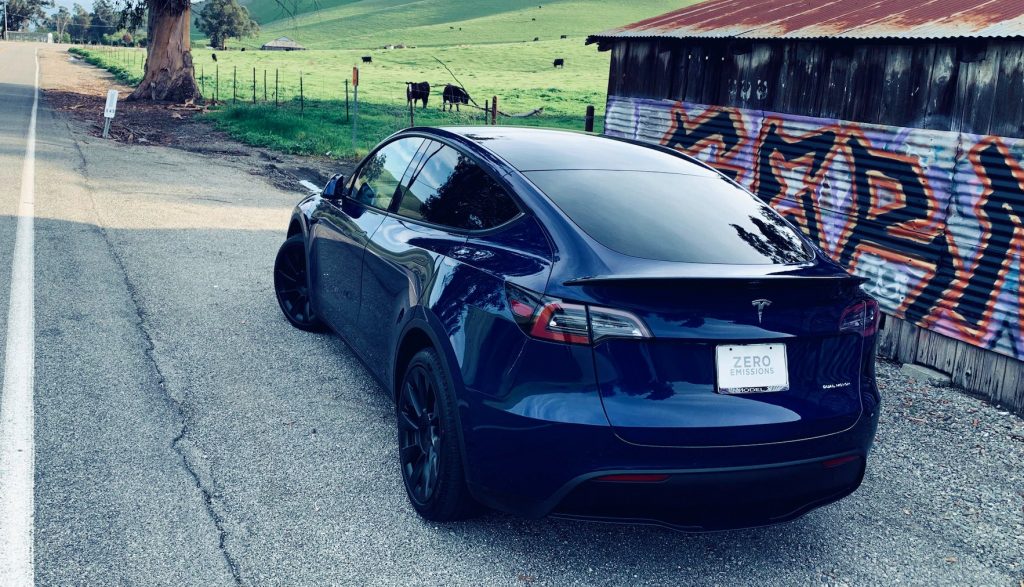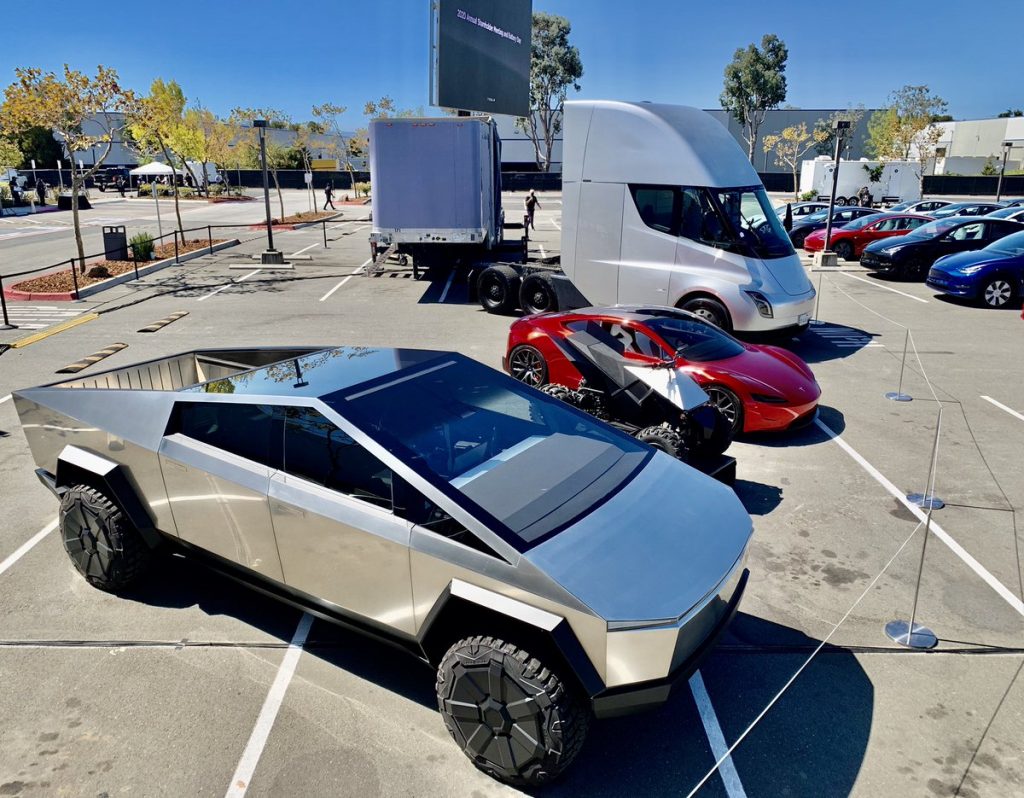

News
Tesla’s goal of producing 1 million cars per year is closer than everyone thinks
In classic Tesla fashion, Elon Musk shared an almost insane goal back in 2016. While speaking with analysts in a conference call, Musk remarked that he believes Tesla has a shot at achieving a production rate of 1 million cars a year. This statement was met with much criticism, considering that just the year prior, Tesla delivered just over 50,500 vehicles.
As the US auto industry is starting what could very well be a long road to recovery from a pandemic, it is starting to become evident that Musk’s goal may end up being feasible after all.
The year has been cruel to the automotive industry. Back in April, North American car factories that are known to produce about a million vehicles a month ended up producing fewer than 5,000 units. But while the year has been painful for the car industry, some recovery started becoming evident in recent months. Just last month, some large automakers reported sales that beat their 2019 numbers, hinting that an upswing may be on the way.
Amidst this trend is the one outlier in the US auto industry: Tesla. The electric car maker has felt the full brunt of the pandemic, as shown in the extended closure of its Fremont Factory from mid-March to mid-May. Despite this, the company was able to show a profitable second quarter, and this past Q3, it delivered a record 139,300 vehicles, up 50% from Q2 2020. The company also produced 145,036 cars in the third quarter, up 76% from the second quarter.

What is rather remarkable is that Tesla has decided to stand by its initial goal of delivering half a million cars this 2020. This target was already ambitious without the pandemic. With the pandemic, the company’s refusal to adjust its delivery targets seems downright insane. Yet if the company’s Q3 and potential Q4 results are any indication, Tesla may actually be closer to its 1-million-car-per-year goal than expected.
Tesla has delivered about 318,000 vehicles so far this year. For Tesla to meet its goal of delivering 500,000 vehicles in 2020, the company would have to deliver over 180,000 cars in the fourth quarter. This is yet another record for the company, and it is one that would likely be challenging. RBC Capital Markets analyst Joseph Spak, in a statement to The New York Times, noted that while 500,000 cars is “not an unattainable goal,” achieving it now “seems increasingly difficult.”
Yet despite these challenges, the fact that Tesla seems to be in striking distance of its pre-pandemic 2020 delivery goal represents an incredibly notable shift for the company. Just a little over a year ago, after all, Tesla was a much different automaker. It was still an embattled EV company, seemingly scrambling to raise money while TSLA short-sellers circled like sharks smelling blood in the water. Tesla ultimately proved its critics wrong, posting four profitable quarters as of Q2 2020.
If Tesla could come close or achieve its goal of producing and delivering over 180,000 vehicles in Q4 2020, the company would only be 70,000 cars short of a 250,000-vehicle-per-quarter run-rate. Once that is achieved, hitting 1 million cars per year in both production and deliveries will only be a matter of time. Granted, this is a rather ambitious step, but one must note that Tesla is pretty much taking on 2020 with just one and a half factories.

Today, Tesla only produces cars in two sites: the Fremont Factory and Gigafactory Shanghai. And even then, Giga Shanghai is not yet fully ramped, with the facility yet to start Model Y production and the Model 3 line has only started operating with 3 shifts. This means that this year, Tesla has pursued its ambitious goals with a main factory in the US that was closed for over a month and a Chinese plant whose Phase 1 is now just hitting its stride.
These circumstances will likely change by next year. Tesla is in the process of building two new vehicle production facilities: Gigafactory Berlin and Gigafactory Texas. Both facilities are designed to produce high-volume vehicles, with the German plant manufacturing the Model Y and Texas building the Cybertruck, a vehicle that has received well over half a million orders, as per remarks from CEO Elon Musk.
Of course, Tesla’s production and deliveries still only comprise a small part of the auto market. Yet despite this, the company’s rapid rise and the equally quick emergence of the electric vehicle sector means that Tesla is poised to dominate an industry that is still forming. Michelle Krebs, an executive editor at Cox Automotive, a market research firm, said it best in a statement to the NYT.
“Tesla is the EV market right now. It’s still a tiny part of the market, and they are going to face more competition, but they are now well established,” she said.

News
Tesla starts showing how FSD will change lives in Europe
Local officials tested the system on narrow country roads and were impressed by FSD’s smooth, human-like driving, with some calling the service a game-changer for everyday life in areas that are far from urban centers.

Tesla has launched Europe’s first public shuttle service using Full Self-Driving (Supervised) in the rural Eifelkreis Bitburg-Prüm region of Germany, demonstrating how the technology can restore independence and mobility for people who struggle with limited transport options.
Local officials tested the system on narrow country roads and were impressed by FSD’s smooth, human-like driving, with some calling the service a game-changer for everyday life in areas that are far from urban centers.
Officials see real impact on rural residents
Arzfeld Mayor Johannes Kuhl and District Administrator Andreas Kruppert personally tested the Tesla shuttle service. This allowed them to see just how well FSD navigated winding lanes and rural roads confidently. Kruppert said, “Autonomous driving sounds like science fiction to many, but we simply see here that it works totally well in rural regions too.” Kuhl, for his part, also noted that FSD “feels like a very experienced driver.”
The pilot complements the area’s “Citizen Bus” program, which provides on-demand rides for elderly residents who can no longer drive themselves. Tesla Europe shared a video of a demonstration of the service, highlighting how FSD gives people their freedom back, even in places where public transport is not as prevalent.
What the Ministry for Economic Affairs and Transport says
Rhineland-Palatinate’s Minister Daniela Schmitt supported the project, praising the collaboration that made this “first of its kind in Europe” possible. As per the ministry, the rural rollout for the service shows FSD’s potential beyond major cities, and it delivers tangible benefits like grocery runs, doctor visits, and social connections for isolated residents.
“Reliable and flexible mobility is especially vital in rural areas. With the launch of a shuttle service using self-driving vehicles (FSD supervised) by Tesla in the Eifelkreis Bitburg-Prüm, an innovative pilot project is now getting underway that complements local community bus services. It is the first project of its kind in Europe.
“The result is a real gain for rural mobility: greater accessibility, more flexibility and tangible benefits for everyday life. A strong signal for innovation, cooperation and future-oriented mobility beyond urban centers,” the ministry wrote in a LinkedIn post.
News
Tesla China quietly posts Robotaxi-related job listing
Tesla China is currently seeking a Low Voltage Electrical Engineer to work on circuit board design for the company’s autonomous vehicles.

Tesla has posted a new job listing in Shanghai explicitly tied to its Robotaxi program, fueling speculation that the company is preparing to launch its dedicated autonomous ride-hailing service in China.
As noted in the listing, Tesla China is currently seeking a Low Voltage Electrical Engineer to work on circuit board design for the company’s autonomous vehicles.
Robotaxi-specific role
The listing, which was shared on social media platform X by industry watcher @tslaming, suggested that Tesla China is looking to fill the role urgently. The job listing itself specifically mentions that the person hired for the role will be working on the Low Voltage Hardware team, which would design the circuit boards that would serve as the nervous system of the Robotaxi.
Key tasks for the role, as indicated in the job listing, include collaboration with PCB layout, firmware, mechanical, program management, and validation teams, among other responsibilities. The role is based in Shanghai.
China Robotaxi launch
China represents a massive potential market for robotaxis, with its dense urban centers and supportive policies in select cities. Tesla has limited permission to roll out FSD in the country, though despite this, its vehicles have been hailed as among the best in the market when it comes to autonomous features. So far, at least, it appears that China supports Tesla’s FSD and Robotaxi rollout.
This was hinted at in November, when Tesla brought the Cybercab to the 8th China International Import Expo (CIIE) in Shanghai, marking the first time that the autonomous two-seater was brought to the Asia-Pacific region. The vehicle, despite not having a release date in China, received a significant amount of interest among the event’s attendees.
Elon Musk
Elon Musk and Tesla AI Director share insights after empty driver seat Robotaxi rides
The executives’ unoccupied tests hint at the rapid progress of Tesla’s unsupervised Robotaxi efforts.

Tesla CEO Elon Musk and AI Director Ashok Elluswamy celebrated Christmas Eve by sharing personal experiences with Robotaxi vehicles that had no safety monitor or occupant in the driver’s seat. Musk described the system’s “perfect driving” around Austin, while Elluswamy posted video from the back seat, calling it “an amazing experience.”
The executives’ unoccupied tests hint at the rapid progress of Tesla’s unsupervised Robotaxi efforts.
Elon and Ashok’s firsthand Robotaxi insights
Prior to Musk and the Tesla AI Director’s posts, sightings of unmanned Teslas navigating public roads were widely shared on social media. One such vehicle was spotted in Austin, Texas, which Elon Musk acknowleged by stating that “Testing is underway with no occupants in the car.”
Based on his Christmas Eve post, Musk seemed to have tested an unmanned Tesla himself. “A Tesla with no safety monitor in the car and me sitting in the passenger seat took me all around Austin on Sunday with perfect driving,” Musk wrote in his post.
Elluswamy responded with a 2-minute video showing himself in the rear of an unmanned Tesla. The video featured the vehicle’s empty front seats, as well as its smooth handling through real-world traffic. He captioned his video with the words, “It’s an amazing experience!”
Towards Unsupervised operations
During an xAI Hackathon earlier this month, Elon Musk mentioned that Tesla owed be removing Safety Monitors from its Robotaxis in Austin in just three weeks. “Unsupervised is pretty much solved at this point. So there will be Tesla Robotaxis operating in Austin with no one in them. Not even anyone in the passenger seat in about three weeks,” he said. Musk echoed similar estimates at the 2025 Annual Shareholder Meeting and the Q3 2025 earnings call.
Considering the insights that were posted Musk and Elluswamy, it does appear that Tesla is working hard towards operating its Robotaxis with no safety monitors. This is quite impressive considering that the service was launched just earlier this year.








